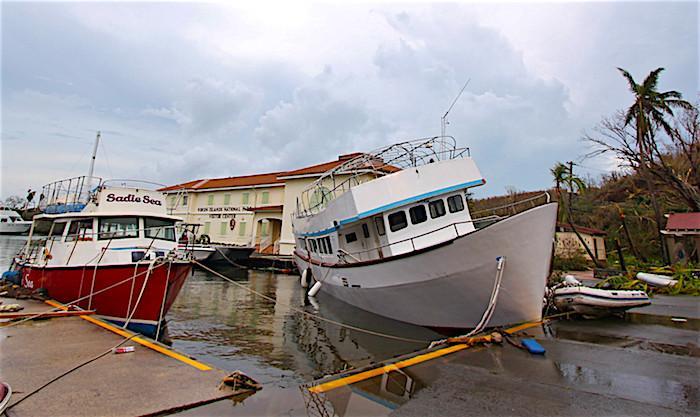
Roughly nine months after Hurricanes Irma and Maria battered Virgin Islands National Park, much work remains to be done, but the park is open to visitors./NPS
Nearly nine months after back-to-back hurricanes pounded the Caribbean, another hurricane season is set to begin. Not entirely ready for that are the National Park System units that are continuing to recover from Irma and Maria.
While all the parks, with the exception of Salt River Bay National Historical Park and Ecological Preserve, are open and anxious to see visitation rebound, they also are still picking up the pieces from last year's hurricane season. And this year's Atlantic hurricane season, which begins June 1, currently is expected to produce 12-14 named storms, with five to seven growing into hurricanes. Perhaps three of those hurricanes could gain a rating of Category 3 or higer. Irma and Maria were Category 5 storms.
Against those predictions, National Park Service crews have been working hard to clear away debris, rebuild, restock, and develop better plans for responding to storms.
"We have not recovered from the last incident. It’s important for our leaders, my leaders, to know that, but also for the community," Randy Lavasseur, the National Park Service lead in the Caribbean, said during a phone call last week.
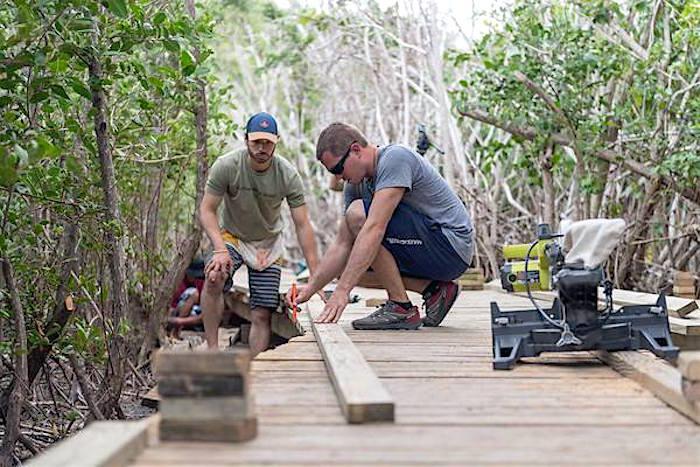
Rebuilding the Francis Bay Trail. Work to restore the trail began on April 16th with the Friends of Virgin Islands National Park trail rehabilitation crew led by Trails Coordinator Mark Gestwicki and Friends President Joe Kessler/NPS
Great strides have been made, he said, pointing to the fact that all but one of the park system units in the Caribbean are open. But much remains to be done, too. While the governor of the U.S. Virgin Islands has announced that St. John, the island that is home to Virgin Islands Nationa Park, will have its own electrical system instead of feeding off of the one at St. Thomas, that has yet to be built.
"That’s extremely promising. The power generation will happen on the island," said Superintendent Lavasseur.
However, the plan also calls for the power to be carried by overhead powerlines, not buried in the ground, making them susceptible to being downed by hurricane-force winds.
"What we did in the National Park Service is we got new generators," he said. "They are up and running, and in place and ready for this hurricane season."
And while the islands' vegetation has come back to recreate a Caribbean paradise, not all the infrastructure has been replaced. Not yet ready, for example, is employee housing to replace those units that were destroyed last fall. While designs for the new units have been selected, construction isn't expected to begin for another two or more months. But they are being designed to stand up to a Category 5 hurricane, and will be located in less exposed areas of Lind Point.
"We also developed a more robust all-risk supply cache that the National Park Foundation gave us $50,000 to help us improve that program," said the superintendent.
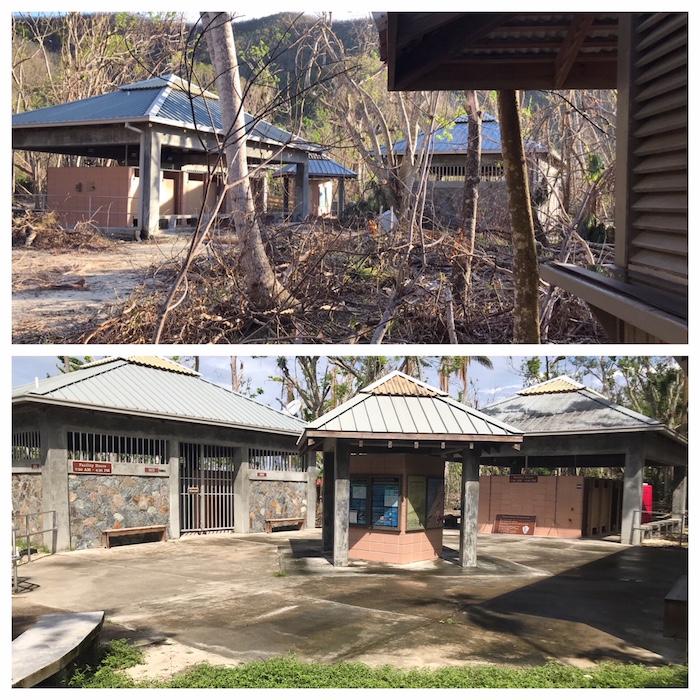
Trunk Bay, before and after hurricane cleanup, Virgin Islands National Park/NPS
Among the items in that cache are new radio systems -- "When a hurricane hits and it takes our radios completely out, we now can bring out our own satellites post-hurricane and stand those satellites up in each park and have good communications. We didn't have that before," he said -- and solar power systems that can be used to keep water treatment plants operating and cell phones charged. Plentiful stores of backup batteries and MREs -- Meals Ready To Eat -- also are on hand.
And each park has storage for 500 or more gallons of gasoline and diesel to help keep the generators running.
On the down side, cleanup and rebuilding of the Cinnamon Bay Campground and the Caneel Bay Resort have yet to start.
“It sustained significant damage," Superintendent Lavasseur said of the idyllic Cinnamon Bay Campground that is managed by the Redwood Parks Co. "The Cinnamon Bay and Trunk Bay concessions are not open. Most likely won’t be open even next year, and if it is, it will be a very limited area. Probably just Trunk Bay. The concessionaire is still trying to figure out how is he going to move forward."
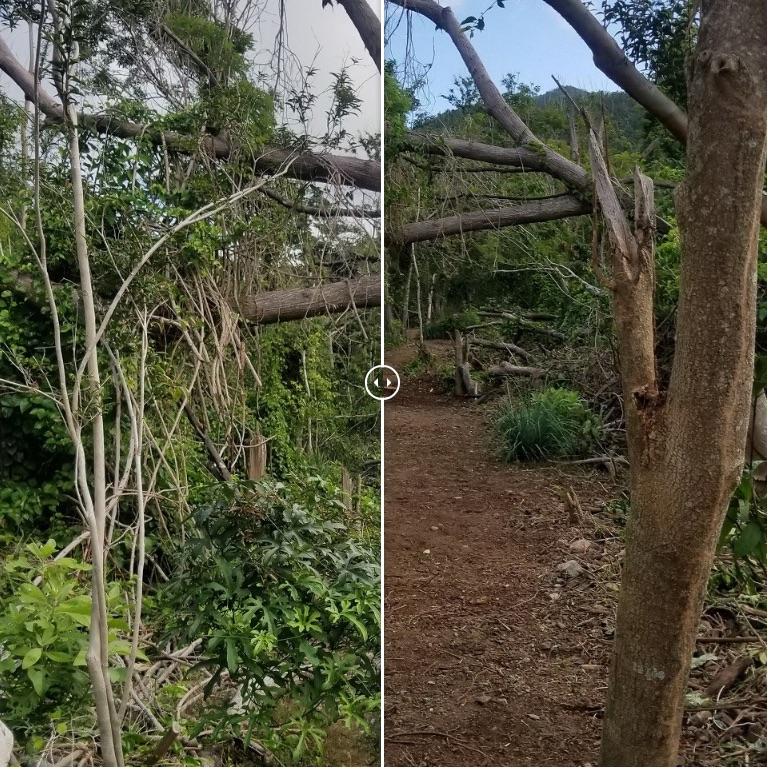
Post-Irma damage to Reef Bay Trail and after cleanup work/NPS, Eric Wood
The problem with getting Cinnamon Bay back open are negotiations between Redwood Parks and its insurance company, the superintendent said. Funds are needed to repair underground water lines as well as the restrooms and concessions area, he said.
"It’s hard to deal with insurance companies, and how you’re going to move forward and how you’re going to have the financial diversity to make sure you can even get insurance to rebuild," Superintendent Lavasseur said. "In the Virgin Islands, it’s very hard to get insurance, and if you don’t have a diverse portfolio, you’re not going to get insurance.”
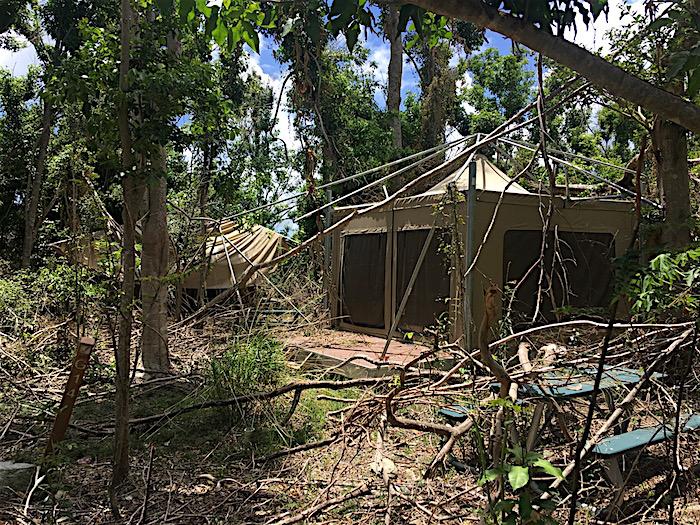
Damaged eco-tent at Cinnamon Bay in Virgin Islands National Park, photographed this month/News of St. John
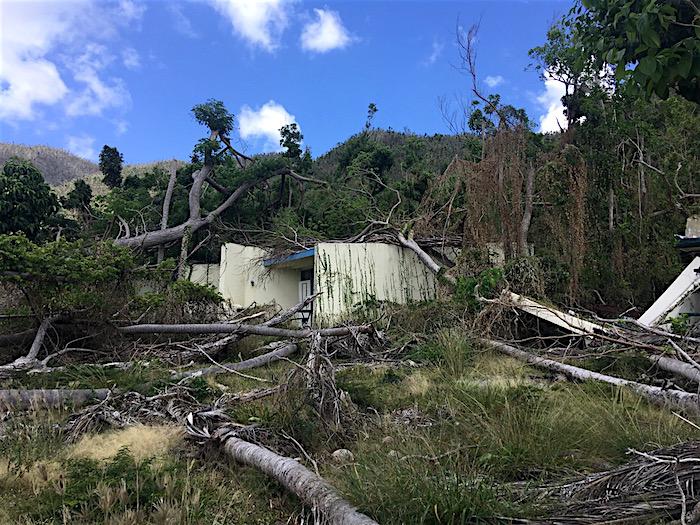
Damaged cottage at Cinnamon Bay, Virgin Islands National Park, photographed this month/News of St. John
Caneel Bay Resort, meanwhile, is mired in efforts to land a 60-year extension to its Retained Use Estate inside the park. While the current RUE is scheduled to end in 2023, Caneel Bay's operators maintain that they can't get investment funding for their operation without a long-term renewal.
Talks over a lease at Caneel Bay -- one option to extending the RUE -- have been ongoing since at least 2010. Park Service officials in Washington, D.C., maintain there have been "high-level discussions." Gary Engle, who sits on the executive committee of the holding company that controls the Caneel Bay Resort, maintains there never have been "substantive" talks.
Traveler has filed a Freedom of Information Act request to review the Park Service's records pertaining to those negotiations. The request was to have been fulfilled by April 16, but remains unanswered.
Unknown is how much damage the coral reefs ringing St. John have sustained.
"Of course, we know we had broken coral, because they were washing up," said Superintendent Lavasseur. "But as far as the health of the coral, with the amount of sedimentation that came off the hillsides, we don’t know what the long-term looks like."
Before and after the storms video clips of Water Creek in Hurricane Hole by Dr. Caroline Rogers:
Enduring Irma and Maria, and rebuilding and repairing the park units, not only showed the innate reliance that exists within the National Park System as a whole, but also the interagency cooperation that can arise, said the superintendent.
“We had people from Alaska here. Think about leaving Alaska, in that weather, and then coming to Puerto Rico in our heat and humidity," Superintendent Lavasseur said with a chuckle. "I know they were struggling, and they were just wonderful. Everybody that came here to help work, it really does just bring me to tears to see how much resources and help we got from the National Park Service when our other federal counterparts weren’t getting the support that we were getting.”
For about three months Dry Tortugas National Park lent the Caribbean parks the use of its ship, Fort Jefferson, to ferry supplies from Miami to San Juan.
“Because we weren’t talking, we didn’t know about all the other resources until it was too late," Superintendent Lavasseur said of the lack of post-hurricane communications between federal agencies in the Caribbean. "So we’re going to talk about how we’re going to meet post-hurricane, how we’re going to do resource sharing.”
Though not everything is perfect in the wake of Irma and Maria, the Caribbean parks can handle visitors.
“We’re begging people to come visit us," said the superintendent.

Francis Bay sunset, Virgin Islands National Park/Randy Lavasseur



Add comment